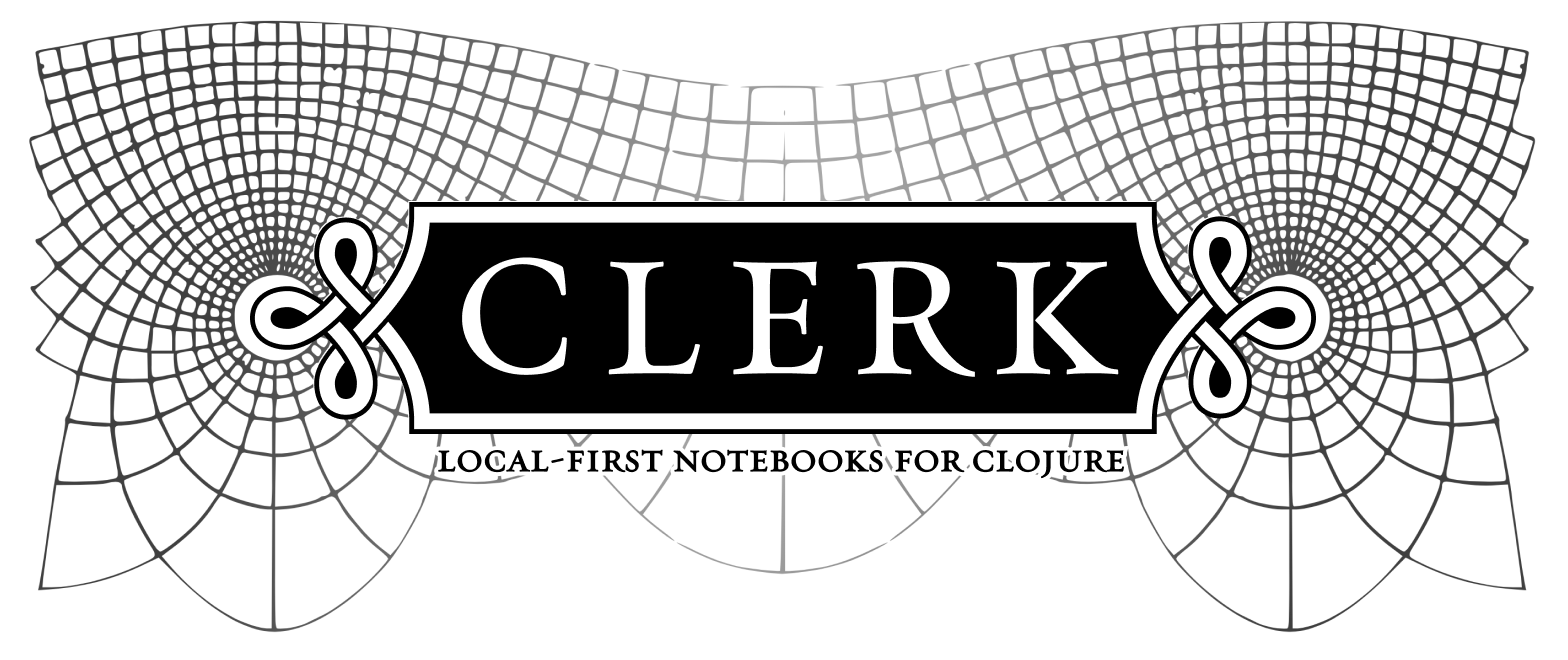
Clerk
Local-First Notebooks for Clojure
🎪 View Demos • 👩🎨 Using Clerk • 🪚 Development
Clerk takes a Clojure namespace and turns it into a notebook:

🎪 Demos
Clerk comes with a demo repo full of interesting use cases. Check them out and feel free to add your own via PRs.
⚖️ Rationale
Computational notebooks allow arguing from evidence by mixing prose with executable code. For a good overview of problems users encounter in traditional notebooks like Jupyter, see I don't like notebooks and What’s Wrong with Computational Notebooks? Pain Points, Needs, and Design Opportunities.
Specifically Clerk wants to address the following problems:
- Less helpful than my editor
- Notebook code being hard to reuse
- Reproduction problems coming from out-of-order execution
- Problems with archival and putting notebooks in source control
Clerk is a notebook library for Clojure that aims to address these problems by doing less, namely:
- no editing environment, folks can keep using the editors they know and love
- no new format: Clerk notebooks are regular Clojure namespaces (interspersed with markdown comments). This also means Clerk notebooks are meant to be stored in source control.
- no out-of-order execution: Clerk notebooks always evaluate from top to bottom. Clerk builds a dependency graph of Clojure vars and only recomputes the needed changes to keep the feedback loop fast.
- no external process: Clerk runs inside your Clojure process, giving Clerk access to all code on the classpath.
🚦 Status
ALPHA, expect breaking changes.
👩🎨 Using Clerk
To use Clerk in your project, add the following dependency to your deps.edn:
{:deps {io.github.nextjournal/clerk {:mvn/version "0.2.214"}}}
Require and start Clerk as part of your system start, e.g. in user.clj:
(require '[nextjournal.clerk :as clerk])
;; start Clerk's buit-in webserver on the default port 7777, opening the browser when done
(clerk/serve! {:browse? true})
;; either call `clerk/show!` explicitly
(clerk/show! "notebooks/rule_30.clj")
;; or let Clerk watch the given `:paths` for changes
(clerk/serve! {:watch-paths ["notebooks" "src"]})
;; start with watcher and show filter function to enable notebook pinning
(clerk/serve! {:watch-paths ["notebooks" "src"] :show-filter-fn #(clojure.string/starts-with? % "notebooks")})
You can then access Clerk at http://localhost:7777.
See the /notebooks folder in the Clerk repository for a number of sample notebooks.
Editor Workflow
For even better flow states, we recommend you bind clerk/show! to a shortcut in your favorite editor:
Emacs
In Emacs, add the following to your config:
(defun clerk-show ()
(interactive)
(save-buffer)
(let
((filename
(buffer-file-name)))
(when filename
(cider-interactive-eval
(concat "(nextjournal.clerk/show! \"" filename "\")")))))
(define-key clojure-mode-map (kbd "<M-return>") 'clerk-show)
IntelliJ/Cursive
In IntelliJ/Cursive, you can set up REPL commands via:
- going to
Tools→REPL→Add New REPL Command, then - add the following command:
(show! "~file-path"); - make sure the command is executed in the
nextjournal.clerknamespace; - lastly assign a shortcut of your choice via
Settings→Keymap
🪚 Developing Clerk
Make sure you have Babashka installed, and run:
bb dev
The will start everything needed to develop Clerk. You can connect your favorite editor to it using nREPL.
🐞 Known Issues
See notebooks/onwards.md.
Can you improve this documentation? These fine people already did:
Martin Kavalar, Philippa Markovics & Davide TavianiEdit on GitHub
cljdoc is a website building & hosting documentation for Clojure/Script libraries
× close